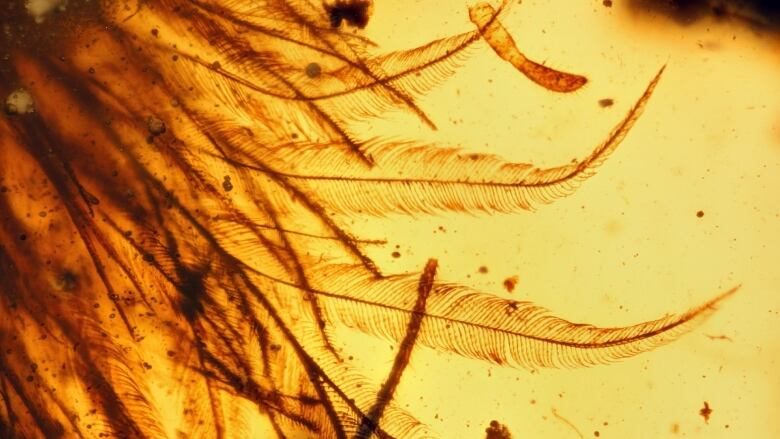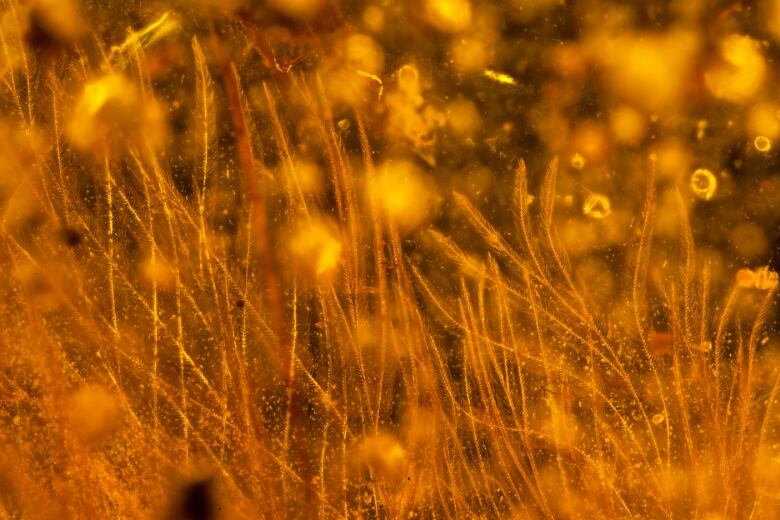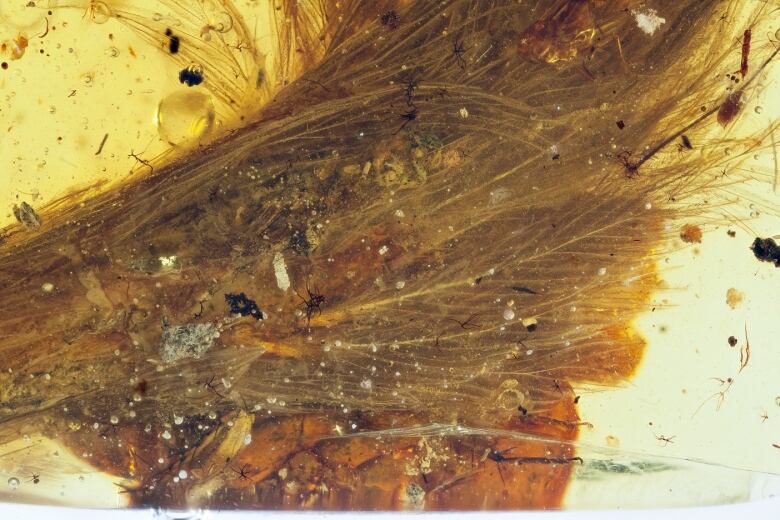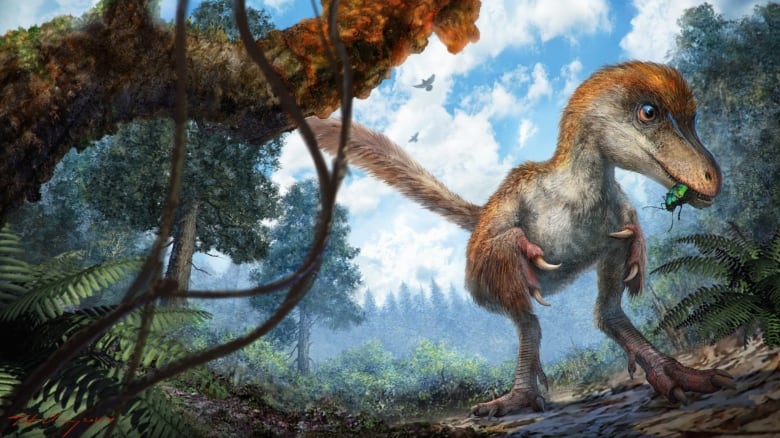Feathered dinosaur tail found trapped in amber
Doesn't belong to prehistoric bird, but a dinosaur, scientists say

In 2015, scientistLidaXingcame across a beautiful and curious pieceat an amber market inMyitkyina,Myanmar, likely destined to become a piece of jewelery.Trapped inside the yellow piece was a feather that others had overlooked as belonging to a plant. ButXingknew that it could be something more.
And it was.
It was a piece of 99 million-year-old history: a dinosaur feather.

"This is the first time that skeletal material from a dinosaur has been found in amber," Xingtold theCBC."Previous finds in amber have included isolated feathers that may have belonged to dinosaurs, but without an identifiable part of the body included, their source has remained open to debate."
Also part of the study was the Royal Saskatchewan Museum. Ryan McKellar, curator of invertebrate palaeontology, was involved in specimen photography and feather-work, determining what happened between when the dinosaur died and when it was trapped.
"It's spectacular," he told the CBC. "Because this is the first time we're seeing dinosaur material preserved in amber where we know for sure that we're dealing with dinosaur as opposed to bird material because we've got the skeletalmaterial there, not just the feathers."

The idea that dinosaurs had feathers is a relatively new one, gaining more support since around 1995, McKellar said.
It's believed they began to develop feathers in the Jurassic period, between 200 and 144 million years ago. Dinosaurs began living side-by-side with birds in the Cretacous period, where this specimen is believed to have originated.

Using CT scanning and microscopes, the researchers ascertained that the feathers belonged to dinosaur with a tail that was chestnut-brown at the upper surface and pale or white on the underside. It is the first time that researchers have been able to glean colour out of a feather.
Along with being able to provide a picture of the dinosaur's plumage, it also gives insight as to how feathers evolved. This ancient find lacks a central shaft that is well-developed by today's standards. The branching of modern feathers called barbules must have formed before the central shaft matured.

The dinosaur is likely a theropod, belonging to a group of coelurosaurs. It would be a small, bipedal carnivore that ran around on the ground rather than flying around.

Xing, who has discovered feathers in amber before finds this discovery particularly thrilling.
"I have been thinking," he said. "This may be the coolest find in my life."
McKellar agrees.
"The preservation is spectacular. It's one of those specimens that's just a jaw-dropper."












_(720p).jpg)


 OFFICIAL HD MUSIC VIDEO.jpg)
.jpg)



























































































